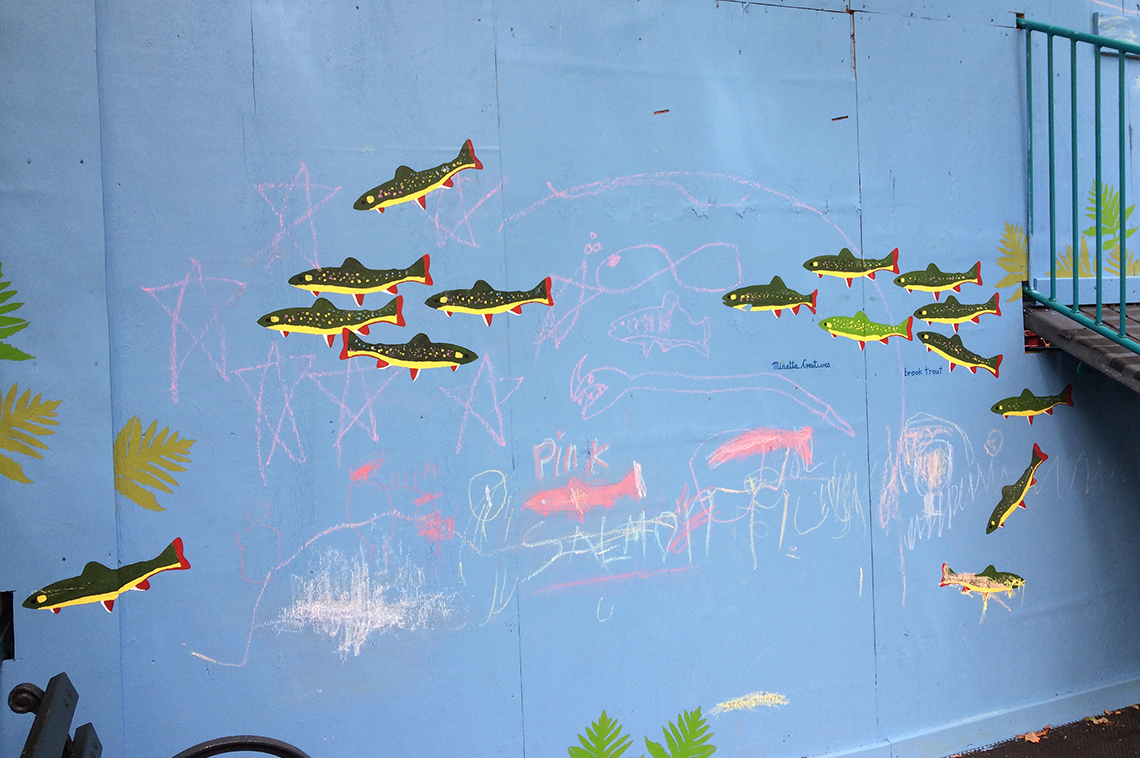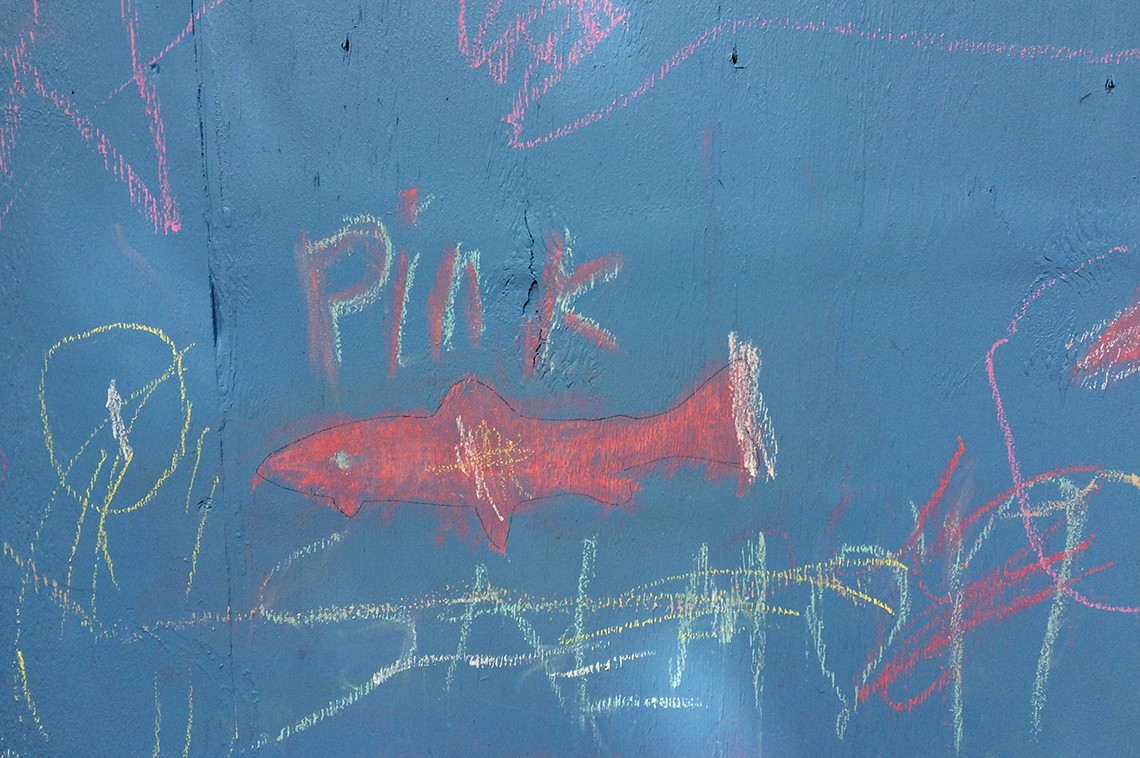

Artists play a critical role in finding creative solutions to community issues. They exist in all our communities, yet they may be overlooked as leaders in a place. ioby, (in our back yards) knows that local leadership spurs positive community change from the ground up, and that artists are a part of that equation. In our partnership with ioby we collaborated on the Artists Lead! program supports people with great ideas to make positive change to community needs. Georgia Silvera Seamans' project was part of the match funding program between ArtPlace and ioby. Here she talks about her project; Minetta Creatures.
What are Minetta Creatures?
Georgia Silvera Seamans: My project “Minetta Creatures’ is located in the Greenwich Village neighborhood of New York City. It follows the historic flow of Minetta Brook, that used to run above ground in the neighborhood and which was completely culverted by the mid-1800's. It is an eco-performance project where performers dress up to resemble plants and animals that would have inhabited the landscape prior to Dutch settler colonization of Manhattan. They will then perform a procession along the historic flow of the brook. Although some of the plants and animals still exist today like the Red Oak, Tulip Tree and Blue Jay, some like the Brook Trout do not.
Why is it important to make this history visible?
When I moved to the neighborhood more than a decade ago, I wasn't aware that there once was a stream that flowed through it. I came across that information accidentally while doing some research about the trees of Washington Square Park, the history of the land. I became familiar with the word Minetta and its origins as a Lenape word and dug deeper, did a lot of Googling and realized that we are missing a core piece of what it means to live in this neighborhood and New York City more generally. With Minetta Creatures, the short-term goal was before COVID hit, to do an ecological procession, but the longer-term goal is to have visible markers in the landscape that not only make people aware of the historical ecology of the neighborhood, but also just to commemorate and memorialize this lost landscape. It's important to let people know that the current environment we live in has a history and we have lost some really incredible pieces of that ecological landscape. And while we might not be able to return to it, wholesale, I think the history can make our lives richer, it can make our advocacy richer, conservation richer. We can imagine sorts of different futures for the landscape we currently live on.
How has the pandemic changed your plans and what's next for the project?
We have had to shelve the procession for now, so in the meantime, we've been doing murals. Our first one was on a boarded-up storefront and as we installed it people stopped to ask what we were doing, what the scene represented. Some people knew that Minetta Brook had run through the landscape, some didn't. People said it looked very beautiful and was a vast improvement from what had been on the wall prior. We always knew it would be temporary and our mural was eventually replaced with a billboard ad.
Community paint by numbers.
As I was installing the mural each day, groups of kids would come over to ask me what I was doing, and that they really liked it. They asked if they could do some painting too. They talked about fish. Fish they had seen, and four stencils of fish that I made and left unpainted. One day I came back and some of them had been filled in with pink chalk with the word salmon written. I decided to leave some of the stencils unpainted, and when I came back next the fish was filled in and instead of ‘salmon’, the word ‘fish’ had been written in. This experience prompted me to think about the idea of paint by numbers. It was a wonderful feeling to leave and come back and see that they wanted to be involved and sort of made their mark on that space. And I thought, what a great way for all ages and all its artistic abilities to participate in a project. Your role becomes part of a neighborhood, part of a community and especially if the artist is not a part of that neighborhood, the artist shouldn't necessarily be the person to make this art. Is that really what I want to say? I think art that's really part of a neighborhood should be made by members of that community and paint by numbers is one way for people to make their mark it's particularly appealing to children and children often aren't involved in neighborhood design projects. And this felt to me, sort of an approachable, easy to succeed way, to involve children in an art making project, especially something on a large scale and something that would be very visible.
How have the Lenape people and Black farmers of this area influenced your work?
Well, the Minetta Brook was integrated into the Lenape landscape. I found a map that showed a pathway running from Broadway to a cove on the Hudson River that bisected Washington Square park crossing over the original flow of the Minetta Brook. And this was a pathway, traveled by Lenape people. I think the cove was a site of a seasonal fishing village and again, this is not something that's legible in any way in the current landscape. Similarly a number of African-born slaves were given freedom and land grants by the Dutch beginning in the 1640s. Some of these land grants overlapped the site of the future Washington Square Park. This history should be more prominent in this landscape; there's a monument to Holley, Washington and Garibaldi. Why is there no monument to the Lenape on which the park sits? It is stolen land. There's no monument to the Africans who farmed the landscape. I haven't figured out a meaningful way to incorporate the aspects of Lenape and African diaspora into the project meaningfully yet so that's ongoing conversation I'm having with myself and with the members of Minetta Creatures.
Creative people doing creative things.
I’m not a trained artist, I don't have a fine arts degree. I’m doing this project in deep collaboration with others to make costumes, design stencils and puppets that will be a part of the procession. When one doesn't think of oneself as a professional or trained, it can stymie one's efforts and so I'm really grateful for organizations and institutions like Art Place that support people like me. I think we have to make these calls for a placemaking in neighborhoods more inclusive. I think the work that ioby is doing, is critical for including being truly inclusive and making all sorts of voices feel comfortable in making a diversity of changes and strategies and approaches and perspectives possible in their neighborhoods.
. . .
About Georgia Silvera Seamans
Georgia Silvera Seamans is an urban and community forester. She directs Washington Square Park Eco Projects. Looking at trees in Washington Square Park led her to bird watching and to develop Explore, a mobile bird education program, with Street Lab. Georgia is a freelance writer and has bylines with Audubon.com, Audubon Magazine, and UrbanOmnibus.net. Her urban forestry and ecology research has been published in Urban Forestry & Urban Greening and Journal of Arboriculture. She blogs about urban nature at Local Ecologist. She holds degrees from Wesleyan University, the Yale School of the Environment, and University California, Berkeley.





